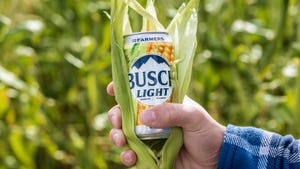African swine fever will influence 2020 global protein markets
Rabobank expects beef demand is set for another year of trend growth in North America.
November 25, 2019

African swine fever (ASF) appears to be the dominating issue in animal production—again in 2020. That was the major news behind the 2020 RaboBank Global Animal Protein Outlook.
Justin Sherrard, global strategist, animal protein at RaboResearch Food & Agribusiness, summarizes what 2020 will bring: “Besides the impact of ASF, many trade disputes and issues are causing uncertainty for global animal protein, with the US-China trade war the most apparent – but not the only – trade uncertainty. In addition, the ongoing rise of alternative proteins also adds to the uncertainty – even though Rabobank has a less bullish view of alternatives than others do.”
The report also covers sustainability developments, which are slightly less prominent than the above issues. However, says Sherrard: “In our view, sustainability is just as important as other areas of uncertainty, as it will shape the growth of animal protein production and consumption through the 2020s.”
Despite the uncertainties, there are also opportunities. “The most obvious area of opportunity in global animal protein is the recovery from ASF, which, in Rabobank’s view, will extend through the 2020s. Winning on sustainability is another opportunity, which can be achieved by harnessing the supply chain and moving ahead of market signals. Finally, investing to secure ongoing trade flows can also be an opportunity, as this can reduce some of the uncertainty and secure continuous market access,” concludes Sherrard.
North America
Rabobank expects production for all species to rise in 2020 – led by pork, followed by poultry, and finally beef. While domestic consumption will grow, exports will need to pick up to manage this production growth.
The Rabobank report shows it expects beef demand is set for another year of trend growth. Although, after four years of consistent growth, North American beef production will ease in 2020. Beef exports should continue growing.
The North American pork and poultry industries continue to grow, while beef production is reaching a peak. Domestic demand remains good but cannot sufficiently absorb the quantity of new product coming to market. Excess production will continue to weigh on North American prices, particularly in pork and chicken.
United States
Per capita consumption growth will moderate for all three proteins in 2020 – up by about 1% in the United States – as economic conditions weaken and competition from export markets raises prices. The lack of domestic support will make export demand even more critical.
Rabobank expects slow growth in beef in 2020, with a premium on quality. Rabobank expects U.S. beef production to be up slightly, by less than 1% in 2020. Non-fed slaughter could also be up a little, as a result of liquidation.
The bank expects the calf crop to come down slightly, reflecting weather conditions at calving and in spring. Carcass weights are expected to return to trend, offsetting any reduction in numbers. With only a fractional increase in production and solid exports, U.S. fed cattle prices are expected to change little.
Rabobank expects a spring high of $128 per cwt to $130 per cwt, and a summer low of 100 per cwt to 105 per cwt. The United States domestic demand should remain strong, especially for high-quality product. Exports should be supported as trade issues are resolved.
Rabobank expects growth in most regions in 2020, but the impact of African swine fever in Asia overwhelms the outlook. China’s production losses will exceed the growth in all other regions combined. Across species, aquaculture and poultry will lead production growth in 2020, while beef will be stable, and wild-catch seafood will decline again. All of these changes are minor compared with the production decline in pork.
Source: Rabobank, which is solely responsible for the information provided and is wholly owned by the source. Informa Business Media and all its subsidiaries are not responsible for any of the content contained in this information asset.
You May Also Like


.png?width=300&auto=webp&quality=80&disable=upscale)
